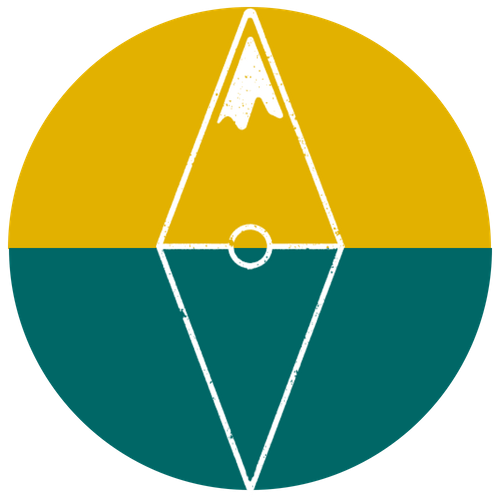MAYA KA'AN: A Photo Essay of the Yucatán's Wildlife
Text & Photos: Justin Lotak · 4 min read
Spiny-tailed iguana in the Sian Ka’an Biosphere Reserve
We often think of the Yucatan for its beautiful white sand beaches and the many resorts that lineup along the coastline one-by-one. But off the beaten path lies an incredibly biodiverse ecosystem, easily accessible from the more popular tourist locations of Cancun, Playa del Carmen and Tulum.
The Sian Ka'an Biosphere Reserve and UNESCO World Heritage Site, and the neighboring Maya Ka'an region more to the interior of the Yucatan Peninsula offer a different kind of tourism, compared to many of the populated coastlines. Most of the tourism operations here are run by local indigenous communities, ensuring that money spent on nature travel goes right back to the people that live there and protect the biodiverse ecosystems. Forests are still largely intact, and a number of wildlife viewing options await those that happen to venture to these areas.
The photos below were taken during a week of visiting Maya Ka'an and the Sian Ka'an Biosphere Reserve.
Yucatán woodpecker (Melanerpes pygmaeus)
Yucatán woodpecker peeking out from its hole, in the Sian Ka'an Biosphere Reserve. These were a common site along the drive through the reserve, though sometimes an iguana would be spotted inside the same holes.
blue land crab (Cardisoma guanhumi)
Several blue land crab can be seen scurrying along the forest floor in the Sian Ka'an Biosphere Reserve. These crabs can sense vibrations of small frequencies, such as that produced by the impact of falling fruit, which they then come out to inspect in search of food.
Pale Catfish (Rhamdia Guatemalensis)
Catfish in one of the many cenotes of the Yucatan peninsula. These freshwater catfish do not have predators and are very curious when you take a dip in the crystal clear waters of Mexico's cenotes.
Cueva de las Serpientes Colgantes
The Cueva de las Serpientes Colgantes, or Cave of the Hanging Snakes, in Kantemo Mexico is named for so for a reason. A species of boa lives in the limestone holes deep within the cave, which hang from the ceiling waiting to prey on passing bats.
turquoise-browed motmots (Eumomota superciliosa)
A pair of turquoise-browed motmots in the Sian Ka'an Biosphere Reserve. Unlike most other species of birds, the long tail of Eumomota superciliosa has developed in both sexes, though they use them for different reasons. Males will use their long tail as a sexual attractant, and males with longer tails have been documented to have higher reproductive success. Both sexes also will use their long tails to wag back and forth in what is thought to be a signal to potential predators that they have been spotted.
black-vented oriole (Icterus wagleri)
These large orioles reside in Mexico and Central America, occasionally making their way into the southwestern US.
Black spiny-tailed iguana (Ctenosaura similis)
Black spiny-tailed iguana searching for food in a bird nest. This lizard is common throughout Central America, and has been introduced in Florida. They can grow up to 4 feet in length and are known the be the fastest-running species of lizard, known to run up to 34.6 kph/21.2 mph.
tropical mockingbird (Mimus gilvus)
A tropical mockingbird grabbing a berry in the Sian Ka'an Biosphere Reserve. These fearless birds will aggressively protect their nests against large predators such as black iguanas or dogs.
bare-throated tiger heron (Tigrisoma mexicanum)
A bare-throated tiger heron hunting in the brackish waters of Mexico's Sian Ka'an Biosphere Reserve. They are the largest species of tiger herons. During mating, two herons will face each other and fluff their feathers as if they might fight, and then one advances a few steps with its bill and neck vertical and releases a few harsh calls, then retreats to its original position; then the other bird mimics the first bird's steps and calls.
Tiny gray frog in Mexico's Yucatan. Not sure of the species - any help would be appreciated. It was less than 2 cm in length.
hooded oriole (Icterus cucullatus)
A male feeding its chicks in the nest. Native to the southwestern US, Mexico and Belize, these birds mostly eat fruit, nectar and insects.
Yucatan squirrel (Sciurus yucatanensis)
A Yucatan squirrel hiding its food. They look similar to grey squirrels, and are native to Belize, Guatemala, and southeast Mexico.
There’s something hidden in this one
















The protection of nature is intricately connected with the protection of the Mayan identities within the authentic Maya Ka’an destination. With shared ownership rights over the land and jungles, the village cooperatives are aware of the power that their decisions have in dictating the faith of the natural ecosystems